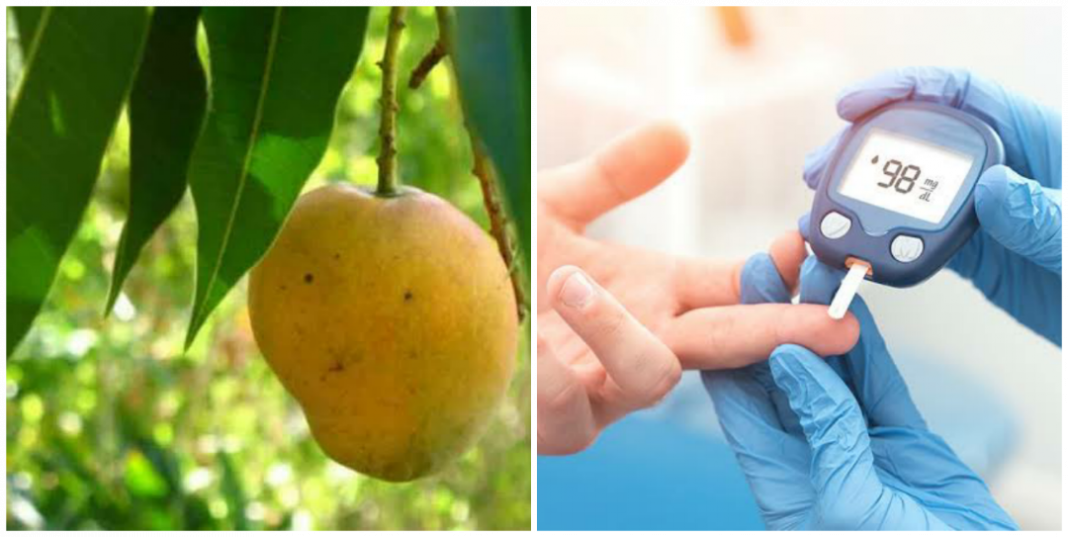How to prepare mango leaves for diabetes..Can mango leaves lower blood sugar?
Tender mango leaves help in treating early diabetes milletus.
Take some MANGO LEAVES, wash properly, cut them into pieces and soak in a cup or bowl of clean water. Cover it properly and leave overnight. Next day in the morning you’ll notice a change in the water to pale green, filter this water and drink on empty stomach in the morning. You can soak another set in the morning against night. You can continue with mango leaf water for diabetes for a week without untoward side effects.
Drinking Mango leaf water actually helps to lower excess blood sugar according to numerous researches on the health benefits of mango leaves and even the seeds. Please while taking mango leaves water, always check your blood sugar to be sure it is effective in controlling your diabetes.

How does mango leaves help to lower blood sugar?
The green leaves of mangoes contain tannins called anthocyanidins, which is effective in treating early diabetes milletus. They also help to treat diabetic complications like diabetic angiopathy and diabetic retinopathy. Tender mango leaves juice helps to raise blood insulin levels. Insulin is a hormone that reduces blood sugar…
Caveat: Mango leaf water should not be solely relied upon for the treatment of your diabetes. It should not be substituted for your anti-diabetic drugs and keeping dates with your diabetologist (doctor).
💥💥💥💥💥💥💥💥💥💥💥💥💥💥💥💥💥
If the glucose level is high in your blood then it can lead to serious health problems. Glucose production and secretion by the liver is strongly inhibited by high concentrations of insulin in the blood. This insulin regulates the metabolism of carbohydrates, fats and protein by promoting the absorption of, glucose from the blood into fat, absorbed glucose is converted into either glycogen via glycogenesis or fats.
DIABETES IS IN TWO FORMS: TYPE 1 DIABETES AND TYPE 2 DIABETES.
Type 1 diabetes can’t be prevented, Its hereditary, runs in the blood and genes.
You are at risk of developing type 2 diabetes if you:
have pre-diabetes (slightly elevated blood sugar levels)
are overweight or obese
have an immediate family member with type 2 diabetes
are over age 45
are physically inactive
have ever had gestational diabetes, which is diabetes during pregnancy
have given birth to a baby weighing more than 4kg
have a lot of belly fat
Type 1 diabetes can appear at any age, but it’s most common among children, adolescents and young adults. Type 1 diabetes requires daily attention to diet, exercise, and insulin shot.
Carbohydrate is the one nutrient in your diet that most affects blood sugar levels. …
If you’re diabetic, it is important you also learn about care of the foot as diabetics are prone to diabetic foot ulcers which could be hard to treat and lead to amputation.
nimedhealth.com.ng
























